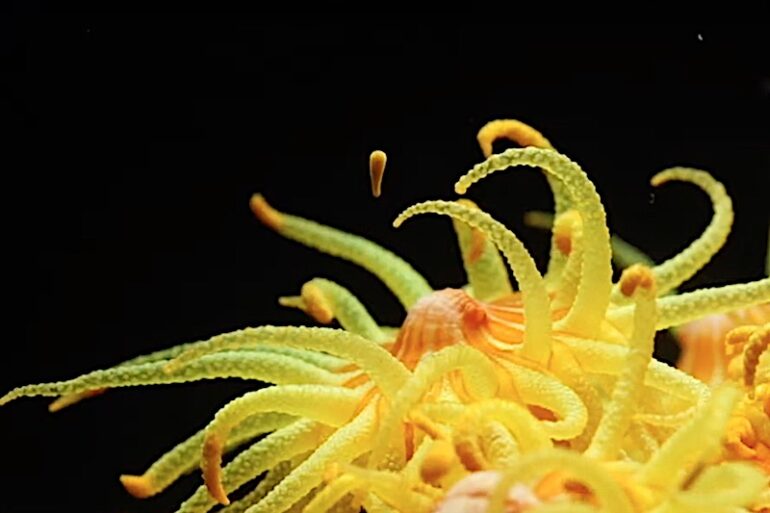Tubastrea sun corals are by far the most common non photosynthetic coral in the reef aquarium hobby, partially because they are so common throughout their natural range in the Indo-Pacific Oceans. Since the beginning of the last century however, the first of three Tubastrea species began establishing itself in the Caribbean and Western Atlantic ocean as well, a feat that no other stony coral has yet achieved.
To better understand how sun coral and Tubastrea coccinea in particular could be so prolific, researchers from brazil worked with mature colonies to characterize their breeding habit and fecundity. Incredibly, from only ten colonies the scientists were able to obtain over 18,000 larvae over a period of three months, or nearly 2,000 larvae per coral in a single spawning season.
Keep in mind that Tubastrea are not broadcast spawners but brooders which release fully formed, peanut shaped larvae called planula, which can swim about for a few days until they are ready to settle onto the reef. With this level of fecundity, it’s no surprise that sun corals can quickly cover barren oil rigs and just about any section of reef substrate which isn’t already colonized.
Along the way the Sun Coral scientists captured the moment that planula escape their parent coral, wriggling right through the tentacle tip. It’s fascinating to see how the coral larvae have no resemblance to their parent except for coloration and look more like a little worm with just the faintest hint at its motility. As more research like this is done by scientists wishing to better understand how to save and protect corals where they are threatened, we’ll hopefully begin seeing more of this kind of work and documentation coming from the aquarium side of coral husbandry.



